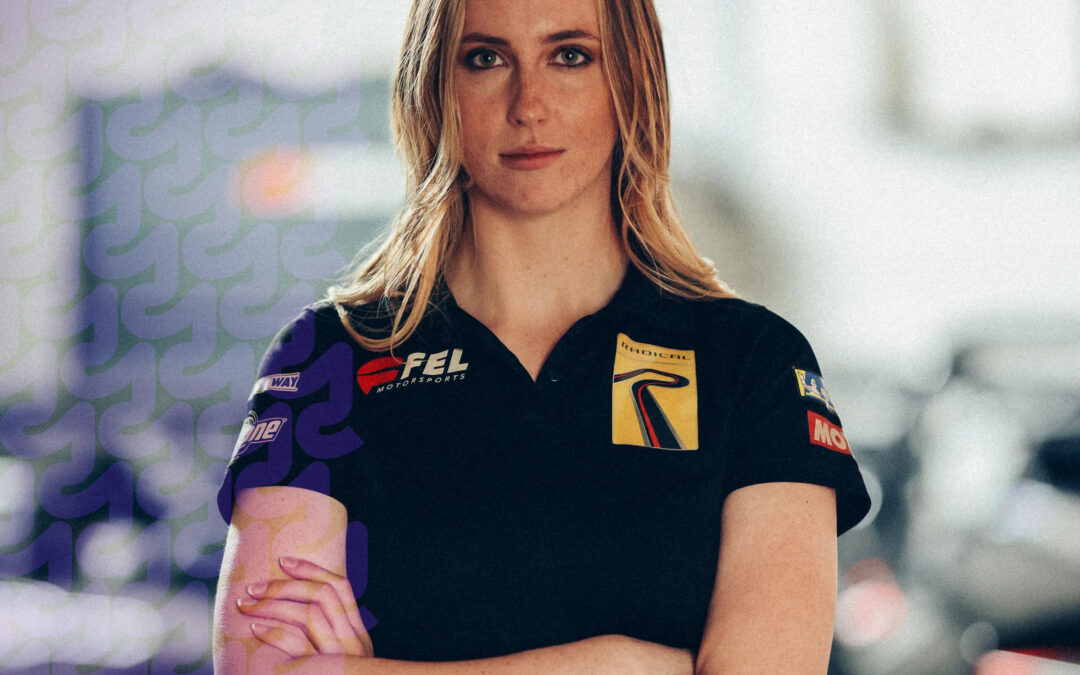In England, a country with a long history of racing, a young female driver went across the pond to realise her racing dream, despite the challenges of being a minority in nationality and gender.
On a sunny Sunday at the Darlington Croft Circuit in Northeast England, Alana Carter sat in her Lotus Amira GT4, gripping the steering wheel tightly with her hands, staring dead ahead.
Five red lights, pedal to the floor, a screech of the tires, and Alana was away.
The challenge with driving at such high speed is not the straights, it’s the low-speed corners. But Alana and her teammate fended off the formidable competition in their McLarens, Aston Martins, and Mercedes, and, on the final lap, Alana passed the chequered flag to secure a one-two finish for her team.
Pushing the car to the brink, her steady control, strong familiarity, and experience all led her to here, the podium. As she stood there, basking in her victory, she looked up at a plane slowly flying overhead, she’d never felt anything like this before.
Alana grew up racing on oval tracks back home in Canada when she was 11, and it was her family’s strong support that pushed her to where she is today.
“My dad is my hero; he still races now at 60 years old,” she explained. “He had an automotive business, so we were able to build our own race cars with subsidised cost.”
In order to chase her dream, Alana had to leave her day-to-do job, she spoke about how it could have been one of the riskiest decisions of her life: “There have been periods of serious stress where I’ve been really worried about finances because I just have so much on my plate. I feel like I’m drowning sometimes but it feels like it’s really starting to pay off.
“All of those risks I’ve taken feel like they’re worthwhile now because everything’s moving in the right direction. One of the things I always remind myself is: ‘If it was easy, everyone would do it’.
“You have to be willing to sacrifice comfort in order to be successful.”
Like every driver, Alana has to battle nerves before a race: “I remind myself it’s hard now so we can be better in the future like nothing good ever comes easy, right and every time I deal with some serious discomfort.
“Maybe I’m a little delusional but I tell myself if it’s this hard now it’s going to be that great later; it has to pay off eventually.
“I’m so committed to it right now – I’ve changed everything to make this a reality and for me giving up is not an option.
“I definitely get nervous sometimes it’s because I’m not ready, and I need to step it up, but that just means I need to train harder.”
To get in the zone mentally before a race, she tends to listen to the same songs she listens to when she is training before she gets behind the wheel on race day.
She spoke about just how hard it is to be a driver: “My passion for it makes the hardship worthwhile for sure. I don’t ever really think about giving up. It just motivates me to dig in deeper and work harder.
“My friends have helped me out immensely, they’ve been 100% crucial, I would not be doing what I’m doing right now if I did it on my own.
“I wouldn’t be the driver that I am if it wasn’t for my network. I’ve had so many people helping me and offering advice. My friends have even helped out with my social media. It is absolutely critical to build an amazing network that believes in you just as much as you believe in yourself.”
A lot of fans may believe female racing drivers would encounter unfair treatment in competitions, but this has not been the case for Alana: “The past year or so I genuinely don’t feel like I’ve run into that many challenges as a woman. My teams and competitors, have been incredibly supportive and I feel so fortunate to have an amazing group of people around me.”
Alana believes the most important aspect of making it into F1 is luck: “Only 0.001% of professional drivers get the opportunity to compete amongst the top twenty racers in the world. Female racing drivers only account for less than 10% of the total racing drivers, this is a probability game.
“How we ensure physical strength may play a factor, but how are we even really able to compare male and female drivers, when we’ve got so few women getting through.
“But at the end of the day, it looks better for women when we can compete against men and there are already women not only doing it but crushing it like Iron Dames.
“Racing in one of the 24-hour series is a big dream of mine. 24 hours at Le Man would be absolutely incredible, 24 hours of Daytona, or just any of those 24 hours series, I think that would be a real dream come true.”

